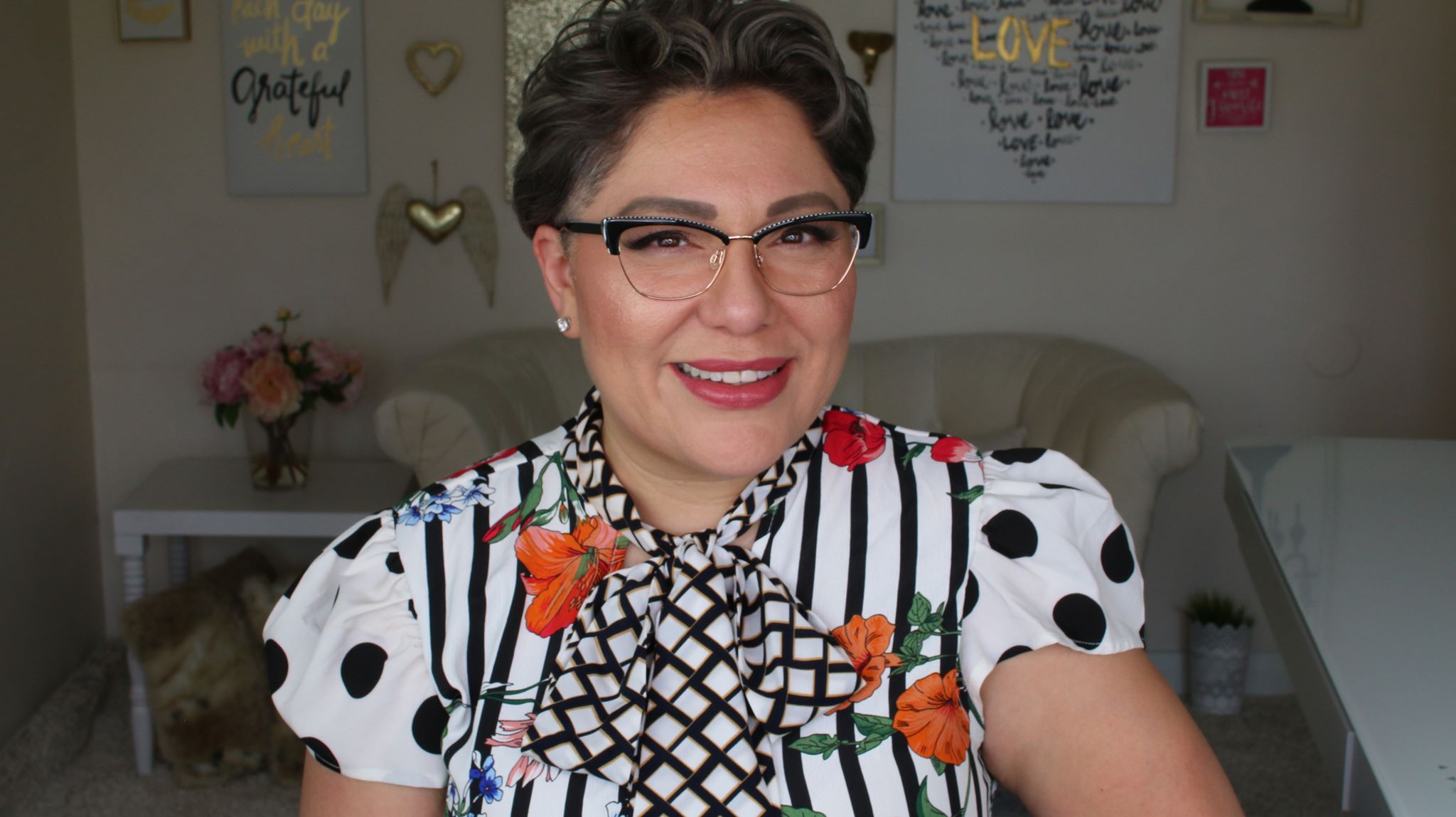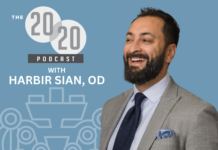Podcast: Play in new window | Download
Subscribe: Apple Podcasts | Google Podcasts | Spotify | Amazon Music | Android | RSS
This podcast was produced in partnership with Transitions Optical.
“We live in a world now where it’s all a big melting pot,” Dr. Darryl Glover states at the beginning of this podcast. “It’s all different flavors; all different backgrounds. And as eye care professionals we have to know how to serve these patients.” Joining us on this discussion are two eyecare professionals that are embracing this mindset, Dr. Diana Canto-Sims and optometry student Sydney Madrigal.
Sydney Madrigal is a Cuban-American fourth year optometry student at the University of Alabama at Birmingham School of Optometry. Growing up in South Florida, she shares that entering optometry school in Alabama was “a bit of a culture shock.” In Florida her life was immersed in the Hispanic culture of her upbringing, but in Alabama she’s felt the need to explain herself and her cultural background more so than she ever has before. It’s helped her grow as both a doctor in training and a person to recognize the importance of effective communication with people that don’t share a common cultural identity.

Dr. Diana Canto-Sims was born in Chicago to Mexican and Puerto Rican parents, but she moved when she was ten years old to Puerto Rico. She lived there for 15 years, attending optometry school at the Inter American University of Puerto Rico School of Optometry. Upon graduating she moved back to Chicago with her optometrist husband and opened Buena Vista Optical to serve the Hispanic community in her city. Dr. Canto-Sims shares that her grandfather never had an eye exam until he was late in life and having trouble with vision. They got the devastating news that his vision was permanently lost from macular degeneration, but if he had been getting regular eyecare and the condition had been detected earlier, there might have been a way of preventing this situation. Her father was also born with strabismus and a significantly amblyopic eye, and had also never been treated in an eye doctor’s office. “For me, I couldn’t believe that in my family, no one ever went to the eye doctor… I kept thinking, if only we had known for my grandfather, for my father. I remember going to the eye doctor and translating for my parents and they were so confused about what was going on. So for me this is really heart felt because now there is a lot of diversity; there are eye doctors that can do an eye exam in Spanish – but when I was growing up, that didn’t exist.”

It’s very important to be able to serve members of your community in the language that they speak, but Dr. Canto-Sims and Madrigal both agree that even if you are struggling communicating in Spanish, just trying to communicate shows the patient that you care. “Patients don’t care what you know until they know that you care,” Dr. Canto-Sims shares. Even if you don’t have perfect language skills, it’s important to show patients that you care enough to try.
What are some of the most common misperceptions that Hispanic communities have about eyecare?
- Knowing the difference between optometrist, ophthalmologists, and opticians can be a point of confusion. Madrigal encourages doctors to take the time to explain that as optometrists you aren’t just getting them a prescription, but you are also doing a comprehensive ocular health exam to detect sun damage, diabetes, and high blood pressure issues affecting the eye.
- The need for UV protection for the eyes is also poorly understood in the Hispanic community. Dr. Canto-Sims shares that many of her patients not only don’t know that UV protection is important for the eyes, but also that it’s possible to have UV damage to the eyes in fall and winter months. It’s not uncommon for Hispanic people to scold and make fun of people who wear sunglasses in colder temperatures, Dr. Canto-Sims explains. She makes an extra effort to educate all of her patients about the year-round danger of UV, as well as protecting against light sensitivity in their eyewear with lens technology. She prescribes Transitions® lenses for full protection.
What can you do to make your office more inviting to different cultural backgrounds?
- Have all brochures and office material available in multiple languages, and make sure the information is professionally translated. Avoid colloquial Spanish which can offend Spanish speakers from different countries or cultures. Having a staff member that is fluent in Spanish can also make a big difference with effective communication.
- Include people of different cultural backgrounds in your point of purchase material, office advertisements, and social media. Patients need to see themselves in the images found in your office to understand how your products and recommendations relate to their needs. Dr. Canto-Sims does a photo shoot once a year in her office where her own patients serve as models for office advertisements.
- Include frame shapes and sizes that fit a wide variety of faces. In designing La Vida Eyewear, Dr. Canto-Sims took feedback from her patients about styles and colors that were most interesting and appealing to them, and designed them with wider eye sizes and alternative fit bridges to help better fit her patients’ facial shapes. Her top selling frame is a wider fit 59 eye size, but has a smaller B size so that the frame is not too deep and digging into her patients’ cheeks.
- Customizing eyewear with a focus on both fashion and technology helps patients from different cultural backgrounds see that your office is uniquely designing lenses for their specific needs. Dr. Canto-Sims highly recommends utilizing the Transitions® Signature® style colors and Transitions® XTRActive® style mirrors to prescribe UV protection in a fashion-forward way that allows patients to customize the appearance of their own lenses. Madrigal reports that many Latin artists – from Jennifer Lopez to Bad Bunny – are embracing the color lens style and sparking others to emulate their fashion forward eyewear looks.
- Embrace social media to reach different cultural communities. Studies show that Hispanic Americans not only use social media more than non-Hispanic whites, but they are also 5x more likely to share the content they consume online. Dr. Canto-Sims utilizes this knowledge to effectively market her practice. She posts live videos in Spanish first, and then posts another video in English. “What we’ve noticed is that when we go live, we have patients calling to schedule appointments. In fact, the last time we did a live video, we had 8 patients schedule an appointment from that post.”
- Make sure your waiting rooms are inviting and can accommodate the entire family. Culturally the Hispanic community believes that “the family that shops together, stays together,” Dr. Canto-Sims explains, and that includes going to the eye doctor. She has modified her contact lens training area so that the entire family feels welcome to participate for the event when someone gets contact lenses for the first time. By embracing the family as a whole, it’s more likely that other family members will schedule an eyecare appointment and you may even convince more family members to try out new technology like contact lenses.
You can learn more by following our expert guests on social media: Dr. Diana Canto-Sims @dianacantosims and @la_vida_eyewear and Sydney Madrigal @latinaoptometrist. For multicultural infographics and point of purchase materials, which are also found in Spanish, for better office communication, head to TransitionsPRO.com.






